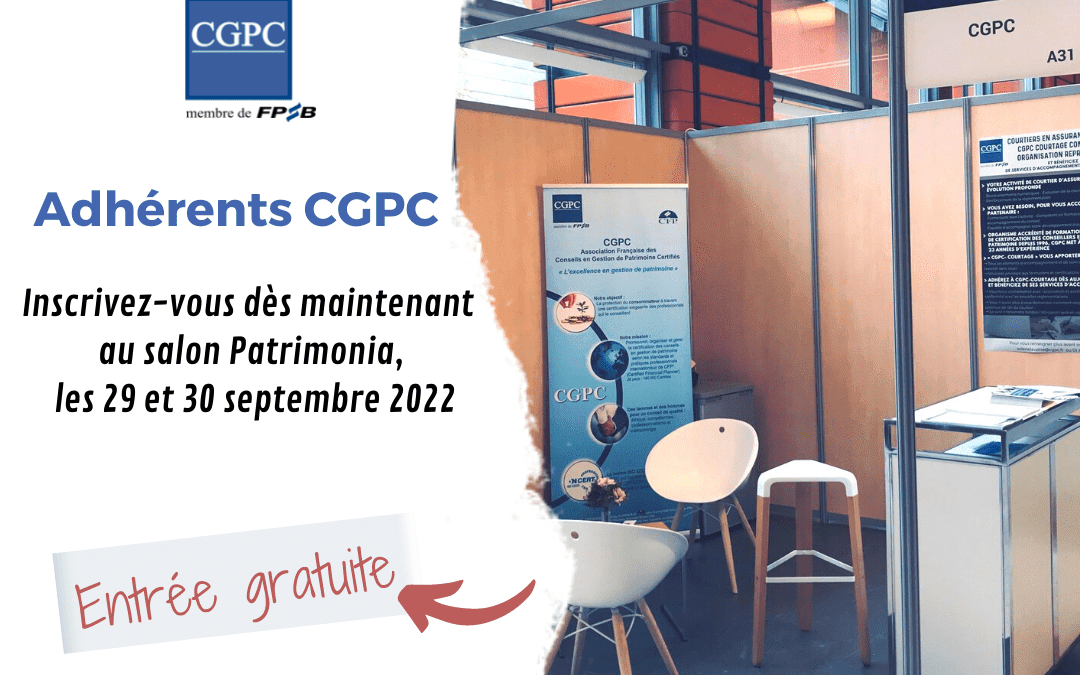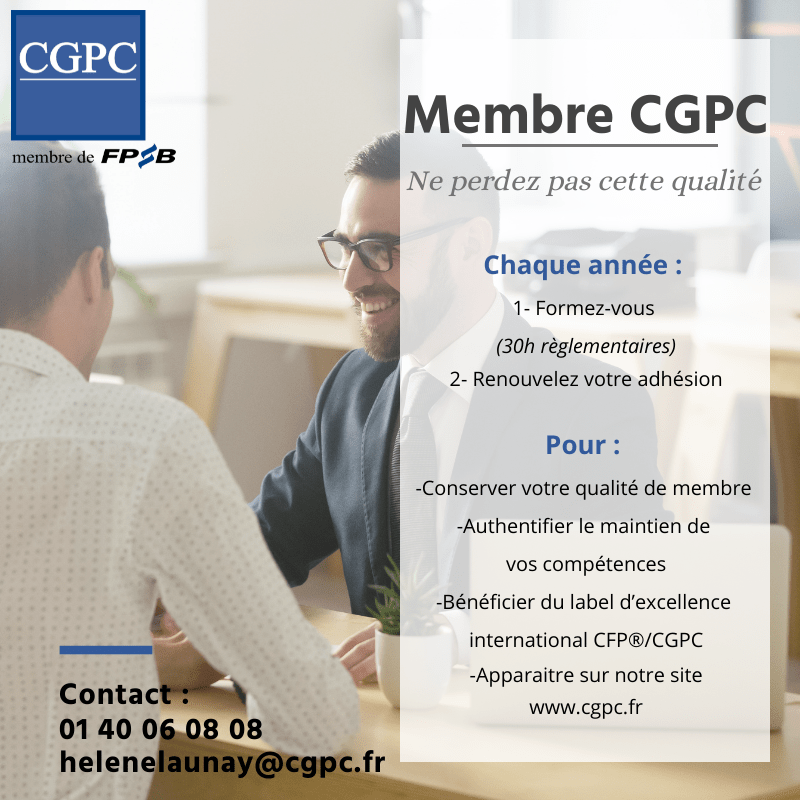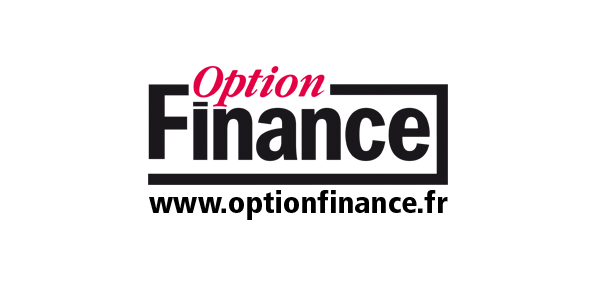
Journée Mondiale de la Gestion de Patrimoine 2025






Gestion de patrimoine : une nouvelle formation CGPC – Ifpass
L’association CGPC et l’Ifpass lancent une formation de niveau bac + 5 pour former des conseillers en gestion de patrimoine. Les cours débutent le lundi 18 janvier 2021 en distanciel.
L’association des Conseils en gestion de patrimoine certifiés (CGPC) a signé un partenariat avec l’Institut de formation de la profession de l’assurance (Ifpass) qui forme les professionnels de l’assurance, pour lancer une formation en gestion de patrimoine de niveau bac + 5. (niveau 7)
Pour lire l’article, cliquez ici

CGPC signe un partenariat avec l’IFPASS
(AOF) – CGPC, Association des Conseils en Gestion de Patrimoine Certifiés, signe un partenariat avec l’IFPASS, Institut de Formation de la Profession de l’Assurance, afin de proposer un parcours de formation permettant aux candidats d’obtenir la certification de « Conseiller en gestion de patrimoine « , enregistré au RNCP au niveau 7 (qui est celui du master), et devenir membres de CGPC.
Cette formation sera proposée en alternance, ainsi qu’en formation continue à des salariés du secteur de l’assurance. Le lancement de la promotion sera effectuée en distanciel.
Pour lire l’article, cliquez ici

Partenariat entre CGPC et l’IFPASS
CGPC (Association des Conseils en Gestion de Patrimoine Certifiés) et l’IFPASS (Institut de Formation de la Profession de l’Assurance) ont signé un partenariat afin de proposer un parcours de formation permettant aux candidats d’obtenir la certification de «Conseiller en gestion de patrimoine», enregistrée au RNCP au niveau 7, et devenir membres de CGPC.
Pour lire l’article, 2020 11 27 Www.professioncgp.com 27 Novembre 2020 50000000346734628